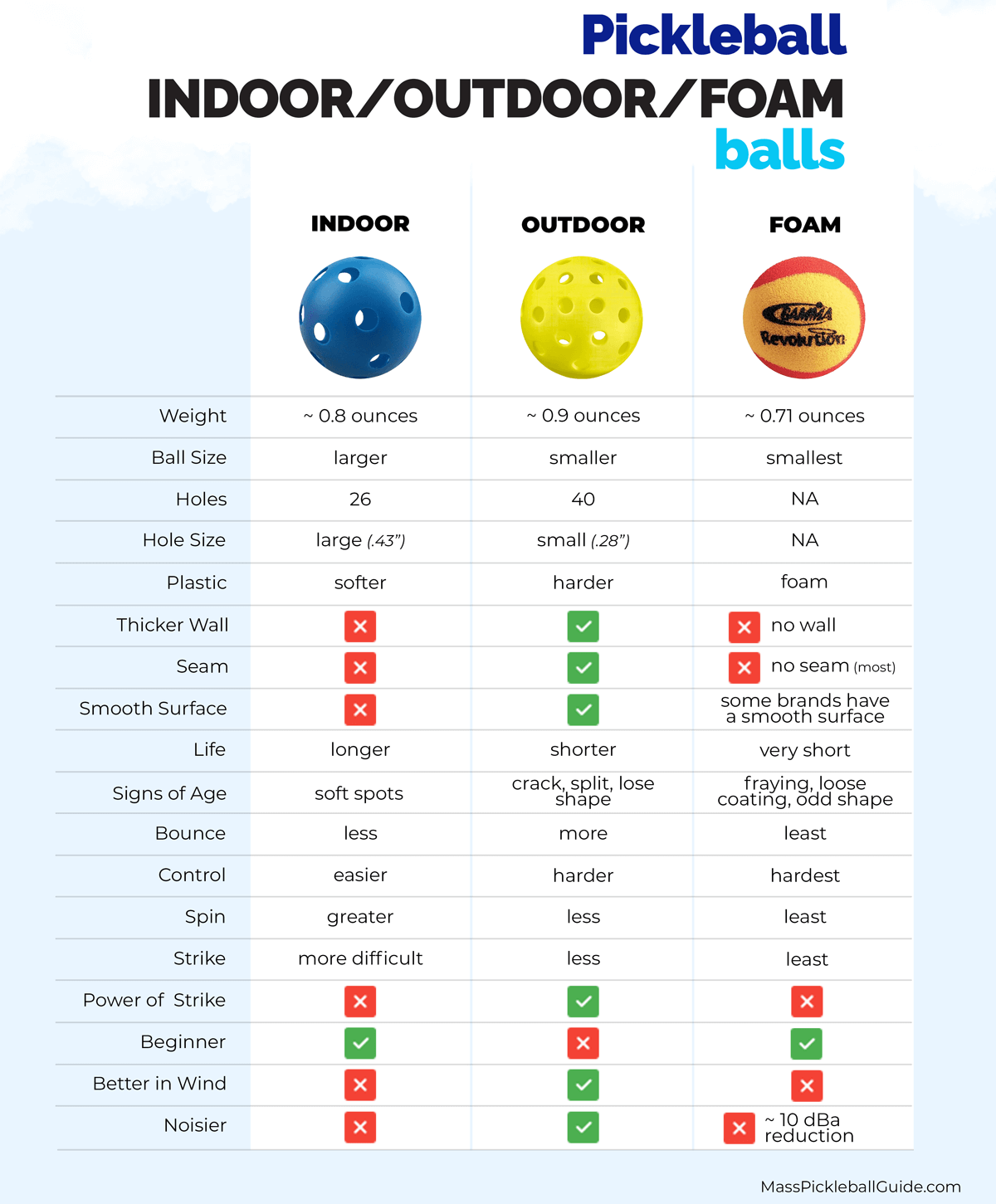Pickleball Ball vs. Tennis Ball: What’s the Real Difference?
not even close
Hey, pickleball peeps and tennis enthusiasts!
Ever wondered why a pickleball isn’t just a mini tennis ball? Oh, there’s more to this spherical saga than meets the eye. Let’s delve into the mesmerizing mystery.
It’s All About the Bounce
First off, let’s talk about how these balls behave when they hit the ground. If you’ve ever played both sports, you’ve probably noticed—these balls bounce differently
Pickleball Ball Bounce
- Height: Lower, but that’s by design
- Consistency: More predictable
- Surface: Better on multiple surfaces
Tennis Ball Bounce
- Height: Higher, adds drama to the game
- Consistency: Can vary depending on wear and tear
- Surface: Generally better on specific tennis courts
| Pickleball Ball | Tennis Ball | |
|---|---|---|
| Bounce Height | Lower | Higher |
| Consistency | Predictable | Variable |
| Surface Adaptability | Multi-surface | Court-specific |
Still scratching your head? Here’s a tip: the material they’re made of plays a significant role in how these balls behave. Want to know what these sports spheres are made of? Take a deep dive into What is a Pickleball Ball Made Of?.
Size Matters: Not Just a Catchphrase
Now that we’re past the bounce, let’s examine size and weight. No two balls are created equal, and that couldn’t be more true here.
- Diameter: Around 2.9 inches
- Weight: Roughly 0.8 to 1.02 ounces
- Diameter: Approximately 2.7 inches
- Weight: Weighs in at about 2 ounces
Not to burst your bubble, but if you’ve been using pickleball balls interchangeably with tennis balls, it’s time to rethink your game strategy. Pickleball balls are generally lighter and have more holes. Yes, you read it right—holes. You won’t find those on a tennis ball.
| Pickleball Ball | Tennis Ball | |
|---|---|---|
| Diameter | ~2.9 inches | ~2.7 inches |
| Weight | 0.8-1.02 ounces | ~2 ounces |
Color plays a role too, believe it or not. Tennis balls are fluorescent yellow for visibility, while pickleball balls come in a colorful array. Can’t decide which hue to choose? Let our Pickleball Ball Color Picker guide you.
Texture Talks: The Tale of Holes and Fuzz
What’s with the fuzz on tennis balls and the holes in pickleball balls? Ever stopped to wonder? Well, it’s texture time!
- Holes: 26 to 40, depends on whether it’s indoor or outdoor
- Smoothness: Like the dance moves of a pro
- Purpose: Aerodynamics, baby!
- Fuzziness: Think of a peach, but sportier
- Smooth Core: Hidden under that fuzz
- Purpose: Controls the spin and flight
| Pickleball Ball | Tennis Ball | |
|---|---|---|
| Texture | Holey | Fuzzy |
| Purpose | Aerodynamics | Spin & Flight |
Pickleball balls are Swiss cheese meets sport—holes everywhere! Curious about the holey life? Check out Indoor vs. Outdoor Pickleball Balls to understand the aerodynamic sorcery behind them.
When Names Confuse: Navigating the Lingo
Last but not least, let’s talk names! A rose by any other name would smell as sweet, but when it comes to these balls, names can be a doozy!
- Dura
- Onix
- Franklin X
- Wilson
- Babolat
- Dunlop
Confused by the various monikers? You’re not alone. Whether it’s a Dura Fast 40 or a Wilson US Open, knowing what you’re dealing with can change the game. So, here’s a hot tip: the name often hints at the ball’s purpose and build.
| Pickleball Ball Names | Tennis Ball Names | |
|---|---|---|
| Common Names | Dura, Onix, Franklin X | Wilson, Babolat, Dunlop |
Lost in the sea of names? Our guide on [Ball Name Confusion](https://masspickleballguide.com/equipment/ball/ball-name-conf
usion/) can be your compass.
Durability Duel: The Longevity Lowdown
Hey, nobody wants a ball that bails out after just a few games. So, how do these sporty spheres hold up over time?
Pickleball Ball Durability
- Lifespan: Fewer games, but hey, they’re more affordable
- Wear Signs: Cracks and softening
- Typical Replacements: Every 3-10 games
Tennis Ball Durability
- Lifespan: Longer, but you’ll pay for that staying power
- Wear Signs: Fuzz loss and pressure drop
- Typical Replacements: Every 1-2 weeks for frequent players
| Pickleball Ball | Tennis Ball | |
|---|---|---|
| Lifespan | Shorter | Longer |
| Common Wear Signs | Cracks | Fuzz Loss |
For the more health-conscious players, it’s worth noting that the wear and tear can affect your game and even lead to common injuries like plantar fasciitis pain. Yep, the ball can play a role in that too!
The Verdict: More Than Just Balls
So here’s the scoop: while they might both be round and used in paddle sports, pickleball and tennis balls are as different as chalk and cheese. It’s like comparing apples and oranges—or should we say pickles and peaches?

Key Takeaways
- Bounce: Pickleball balls have a predictable lower bounce, tennis balls go higher and are more variable.
- Size and Weight: Pickleball balls are lighter and slightly bigger in diameter.
- Texture: It’s holes vs. fuzz!
- Names: Knowing the brand and type can clue you in on performance.
- Durability: Tennis balls generally outlast their pickleball counterparts but watch for wear signs!
So, next time someone says a ball is just a ball, you’ve got the lowdown to prove ’em wrong. Don your gear, choose your ball wisely, and hit the court like the savvy player you are!







